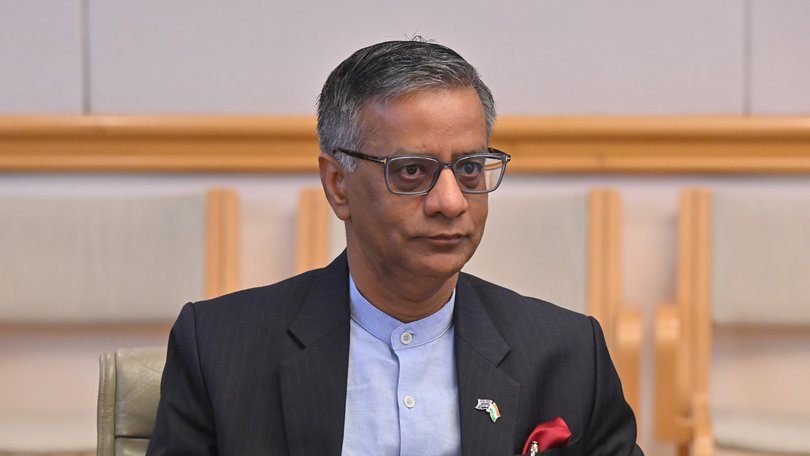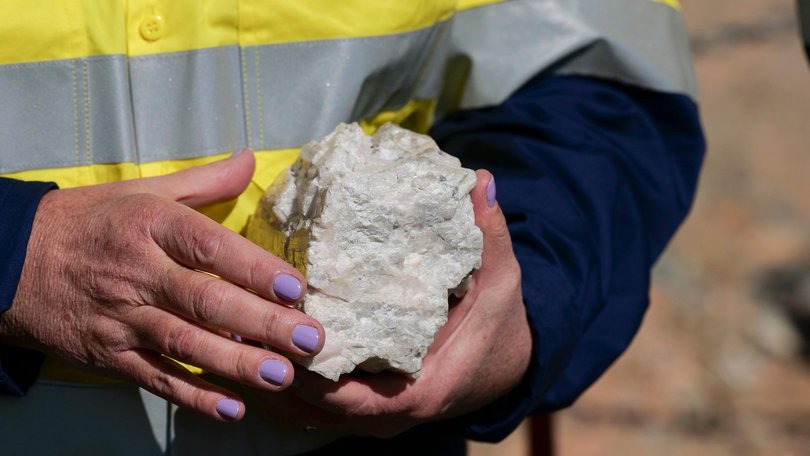Australia, India a ‘force for good’, says diplomat Gopal Baglay on trade, critical minerals, defence ties

India’s top diplomat in Canberra has said New Delhi is seeking a “wide partnership” with Australia in critical minerals investment, cybersecurity and defence to boost bilateral ties as a “force for good” in the world.
In an exclusive interview with the Nightly, High Commissioner Gopal Baglay said India was keen to conclude a “landmark” upgrade to its 2022 trade deal with Australia “as soon as possible” to back each other’s interests during a time of global economic uncertainty.
Negotiators were “very focused” and “engaged with clarity and purpose” to deliver the Comprehensive Economic Cooperation Agreement (CECA) that reflected the “maturity” of the bilateral relationship, said Mr Baglay.
Sign up to The Nightly's newsletters.
Get the first look at the digital newspaper, curated daily stories and breaking headlines delivered to your inbox.
By continuing you agree to our Terms and Privacy Policy.“All around the world, when we see different types of repositioning and recalibrations happening with respect to tariffs and trade, I think it is important that India and Australia leverage each other’s strengths. There are collaborative synergies,” he said.
His comments come as countries around the world are bracing for the impact of US President Donald Trump’s new tariff regime, which has upended the global trading system and threatened to destabilise some national economies.
While the Albanese Government touted a White House decision last Friday to keep the levy on Australian goods at ten per cent rather than raise it as the best deal in the circumstances, India’s relationship with the United States has developed fissures in recent months.
Unlike Australia, the developing nation faces 25 per cent tariffs “plus a penalty” which is yet to be defined.
Although viewed in Washington as a strategic regional bulwark against China, New Delhi’s long-standing dealings with Russia, including the purchase of energy and weapons, has rankled the Trump administration.
Mr Baglay’s praise for India’s ties with Australia suggests the government of Indian Prime Minister Narendra Modi views Canberra as a reliable partner in unpredictable times.

When it came to the critical minerals sector, India was looking to build on existing partnerships to maximise the matching of Australia’s mineral wealth and technological leadership with India’s skilled workforce and capacity to create scale, he said.
Australia has abundant reserves of several critical minerals, including lithium, cobalt, and rare earth elements, which Prime Minister Anthony Albanese has frequently described as the “periodic table under our feet”.
Growing cooperation between the two democracies and members of the Quad security group on supply chain resilience has been touted by geopolitical analysts as an opportunity to break free from China’s dominance in the sector.
However, Mr Baglay played down the suggestion that efforts to strengthen ties on critical minerals were directed at anything or anyone in particular.
“Our effort is essentially to establish mechanisms which have to be ultimately commercially viable, which can secure sustainable supply chains for our requirements,” he said.
Both Governments have provided incentives for investment, with India launching its National Critical Mineral Mission, worth the equivalent of about $7 billion, to ensure self-reliance on clean energy technologies and critical minerals needed for advanced manufacturing and defence capabilities.
Australia’s plans to develop a stockpile of minerals and metals used in commercial and military technologies were revealed during the Federal election campaign with Labor signalling it could be made available to “like-minded” nations and potentially wielded in trade negotiations with the United States.
The $1.2 billion critical minerals strategic reserve was quickly dubbed “minerals for mates”. It was praised by think tanks like the Australian Strategic Policy Institute as a “smart, pragmatic policy” that would protect Australia’s economic and geopolitical interests from economic coercion and bolster its energy transition efforts.
Australia and India could help each other towards the global “net zero” carbon emissions goal even with different timelines based on national requirements, said the High Commissioner.
“The effort is to develop collaborative partnerships with our like-minded partners because that is where we see the value,” he said.
“What we are looking at is a very wide partnership with Australia,” he said.
“We are interested not only in collaborating with Australia for sourcing the minerals, but also developing joint partnerships, joint ventures to use the technology and bring together financial resources,” he said.
India could offer the upscaling of manufacturing capacity for Australian companies for the Indian and global market, argued Mr Baglay.
“It makes eminent sense for us to work bilaterally, but also as Quad members,” he said.
The two countries are already growing partnerships in the sector through joint working groups on renewable energy and strategic minerals, as well as progressing with business deals.
In 2022, the Khanij Bidesh India Ltd signed a Memorandum of Understanding with Australia’s Critical Minerals Office to facilitate potential investments and collaborations in exploration and extraction.
Other opportunities for joint exploration and resources development are under active negotiation.
The High Commissioner also spruiked India as a top destination for Australian businesses, most especially in manufacturing, finance and research and development cooperation between major Australian and Indian institutions.
“If you look at the strengths of the respective manufacturing industries . . . there are more collaborative possibilities between Make in India and Future Made In Australia,” he said.
Opportunities for the financial sector in a country growing at over six per cent annually were also ripe with promise, said Mr Baglay.
“When people think of India as a market of 1.4 billion people, they are not seeing the whole picture. The bigger picture is actually 1.4 billion opportunities,” he said.
“If you want to invest in a country which is predictable, where there is sustained growth, where there is … good return on investment, and there is a pool of very good skilled manpower and trainable manpower … all these boxes are ticked in India.”
Turning to India’s investment in Australia, significant steps had already been made in the IT industry, but New Delhi was seeking more openings in quantum computing, artificial intelligence, cybersecurity and the defence industry, said Mr Baglay.
Military to military ties were already guided by “a very deep level of trust,” he said.
“Our objectives converge, not just for the Indo Pacific, which we both want to be peaceful, prosperous, safe and secure, the rule-based order is followed, where sovereignty is respected . . . but for the whole world,” he said.
“Australia and India see our collaboration, both bilaterally and in fora like the G20 and Quad as a force for global good.”

